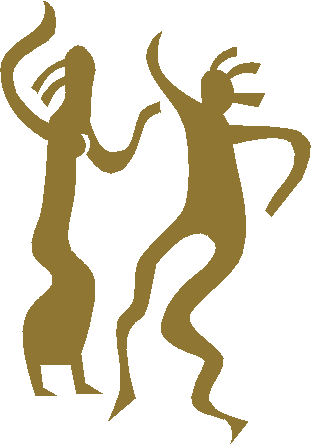| DANCE
IS A DIALOGUE  Learning to dance is like learning a new
language. One has to understand the culture and grammar to be able to communicate using
it. One doesn't learn a language by looking at a dictionary and putting the words together
without understanding their usage and nuances. One has to understand the usage, tenses,
pronunciation, to be able to communicate and understand the language. Learning to dance is like learning a new
language. One has to understand the culture and grammar to be able to communicate using
it. One doesn't learn a language by looking at a dictionary and putting the words together
without understanding their usage and nuances. One has to understand the usage, tenses,
pronunciation, to be able to communicate and understand the language.
In dance, one has to understand the fundamentals, principles and
essential concepts of movement and music. It is not a simple matter of putting step
patterns and sequences together. If so, then learning to speak a language would be as easy
as choosing words in a dictionary and putting them together.
If we were to equate dancing with communicating, we would use such
terms as:
dictionary words |
dancing |
| phrases and
sentences |
steps patterns and
sequences |
| grammar |
fundamentals of
dance |
| culture |
dance character |
| monologue |
solo dancing |
| dialogue /
conversation |
leading and
following |
| interaction |
partner connection |
| essay or story |
improvised dancing |
| speaking clearly |
leading clearly |
| mumbling |
unclear leads |
To
dance, one expresses emotions and life's experiences through movement, acts and reacts to
various messages sent through leading and following, and be in harmony with other people
(your partner and other dancers on the floor).
The most essential element of partner dancing is connecting with
your partner, whether in a competition or on the social floor. Yet it is also the most
difficult to learn. That's why we (my partner and I) make sure to include the concept from
the very first dance lesson. Partner connection is even more important than posture,
balance and centering, weight change, force and resistance, well, at least from my
experience.
Partner connection is achieved through appropriate and logical
leads which enable the follower to to execute the intended move precisely.

|
